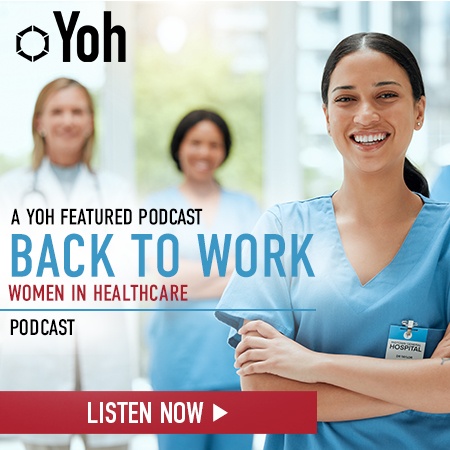 The healthcare industry has undergone a remarkable transformation in recent years, fueled by significant advancements in technology. These innovations have played a crucial role in addressing longstanding challenges and improving patient accessibility in healthcare practices. In this blog post, we will delve into the exciting realm of technological solutions that are revolutionizing healthcare, empowering practitioners to deliver enhanced care and ensuring patients have easier access to the services they need. By harnessing the power of technology, healthcare practices can overcome barriers, streamline operations, and ultimately provide a higher standard of care for their patients. Let's look at five technologies actively reshaping the healthcare landscape.
The healthcare industry has undergone a remarkable transformation in recent years, fueled by significant advancements in technology. These innovations have played a crucial role in addressing longstanding challenges and improving patient accessibility in healthcare practices. In this blog post, we will delve into the exciting realm of technological solutions that are revolutionizing healthcare, empowering practitioners to deliver enhanced care and ensuring patients have easier access to the services they need. By harnessing the power of technology, healthcare practices can overcome barriers, streamline operations, and ultimately provide a higher standard of care for their patients. Let's look at five technologies actively reshaping the healthcare landscape.
1. Virtual Reality (VR)
Virtual reality, once primarily associated with gaming and entertainment, is now being adopted by the healthcare industry to provide easier access to care for patients. VR-based applications enable remote physical therapy, allowing patients to receive essential treatment from the comfort of their own homes.
From aiding neurological physical therapy for patients with conditions like Alzheimer's and dementia to assisting in rehabilitative therapy for injuries, virtual reality proves to be a versatile tool in enhancing patient accessibility and improving overall care.
2. IoT Wearables
The Internet of Things (IoT) has made a significant impact on healthcare through wearable devices. These smart devices, such as step sensors, oximeters, sweat meters, and heart rate monitors, enable remote patient monitoring.
Doctors can receive vital information and data on patients' health directly from these wearables, facilitating efficient management and monitoring of patient care without requiring physical visits to the doctor's office. IoT wearables empower healthcare practices to provide continuous and personalized care, enhancing patient accessibility and convenience.
3. Information Technology (IT)
Healthcare information technology (HIT) plays a pivotal role in improving patient care and accessibility. By leveraging computers and digital software, HIT enables seamless processing, storage, sharing, and retrieval of healthcare data.
Enhanced communication between patients and healthcare practices allows for the efficient transfer of patient healthcare data among different practitioners. This empowers physicians to make more informed decisions, facilitates care coordination, reduces instances of human error, improves clinical outcomes, and boost overall efficiency, all of which significantly contribute to enhancing patient accessibility and care.
4. Artificial Intelligence (AI)
Artificial intelligence has emerged as a transformative force across various industries, including healthcare. In the healthcare domain, AI technologies enable the collection and analysis of vast amounts of patient data, which can be translated into valuable insights to enhance patient care. AI-powered software assists doctors in identifying patterns in patient data, leading to earlier disease diagnosis.
Furthermore, AI enables task automation, freeing up healthcare staff's time to focus on critical matters and providing patients with increased attention and care. AI's potential to optimize healthcare processes and decision-making fosters better patient accessibility and improved outcomes.
5. Telehealth
Telehealth services have revolutionized the healthcare industry by leveraging technology to overcome traditional barriers to access. Online systems and virtual appointments eliminate the need for in-person visits, enabling patients to access necessary care from anywhere.
Telehealth services are not only more affordable but also provide greater availability and convenience, particularly for older patients and individuals with disabilities who may face challenges in leaving their homes. By breaking down geographical barriers and prioritizing patient convenience, telehealth significantly enhances patient accessibility and expands the reach of healthcare practices.
Final Takeaways
Integrating new healthcare technologies requires a gradual and systematic approach to ensure successful adoption by both staff and patients. Overwhelming the practice with multiple changes at once can hinder the process. To begin enhancing accessibility and care, focus on improving your IT infrastructure, as it forms the foundation for various technologies like IoT wearables, AI-powered software, and telehealth services. Upgrading to advanced network services like 5G and implementing cloud-based solutions for secure data sharing and storage are crucial steps. Additionally, hiring skilled IT staff to handle implementation and maintenance of these systems will ensure smooth integration and optimal performance.
With an array of innovative technologies at our disposal, healthcare practices have the opportunity to provide improved access to care for patients. Embracing these technologies not only benefits patients but also strengthens healthcare businesses by streamlining operations, reducing costs, boosting productivity, and attracting more patients. By leveraging virtual reality, IoT wearables, information technology, artificial intelligence, and telehealth services, healthcare practices can embark on a transformative journey towards a more accessible and patient-centric healthcare landscape.
About the Author: Miles is an independent writer with a background in business and a passion for tech, psychology, news, and simply helping people live happily and fulfilled lives. He has lived and traveled throughout the United States and continues expanding his awareness and experiences. He is most likely mountain biking or kicking back with a cup of tea when he is not writing.



